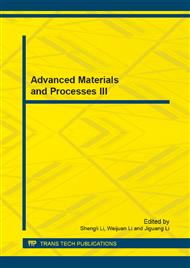p.503
p.511
p.515
p.520
p.524
p.529
p.533
p.536
p.544
A Numerical Method for the Paving Block Evaluation
Abstract:
A process to evaluate the paving block design is proposed. A numerical tire model is developed appropriately for the analysis. The contact pressure between the tire and paving block is calculated. Its distribution pattern is compared with the result of the field tests and is found to be in a good agreement. The present study shows that the magnitude and the distribution pattern are sensitive to the roughness of the road surface. The contact pressure induced by the dynamic impact due to a bumpy surface could be several times higher than that contributed from a smooth run-over. The hot spots in paving blocks are identified as a preliminary study of a research project regarding paving block durability. The tire model is composed of half a deformable tire skin, a rigid rim, a suspension, tire mass, and vehicle mass. The tire-block contact, the tire inner pressure, and the dynamic forces due to inertia are considered as the major loads. It is CPU efficient for less than 1200 CPU seconds required on a personal computer in one drive-through simulation. The proposed study shall be the initial investigation using direct pressure measurement on paving blocks. The lab test results will be fed into numerical model to analyze the failure mechanism which may lead to possible design improvements. Wide application can be expected in the future.
Info:
Periodical:
Pages:
524-528
Citation:
Online since:
September 2013
Authors:
Price:
Сopyright:
© 2013 Trans Tech Publications Ltd. All Rights Reserved
Share:
Citation:


